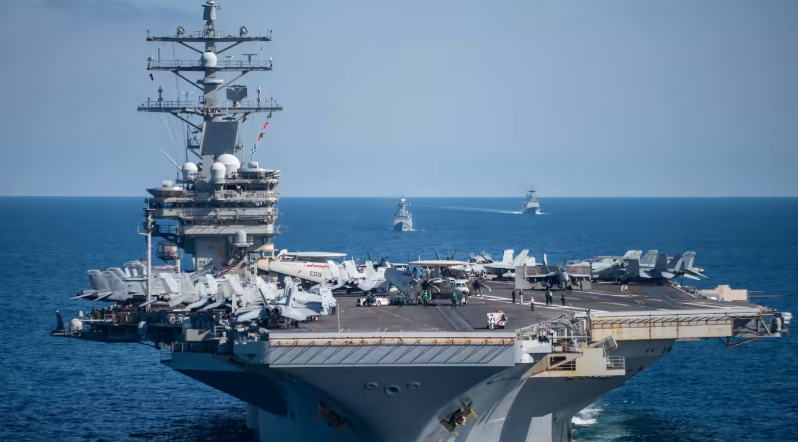The US Navy aircraft carrier strike group and two Japanese and one South Korean destroyer later performed a missile defense exercise on Thursday, two days after North Korea sent a ballistic missile over Japan.
A US aircraft carrier strike group entered the waters off the Korean Peninsula following North Korea’s Tuesday launch of a nuclear-capable missile over Japan.
Revealing the redeployment of the aircraft carrier USS Ronald Reagan and its strike group into the Sea of Japan, the NSC warned that North Korea’s provocation would face a stronger response after Pyongyang’s previous launch of an intermediate-range ballistic missile.
South Korea’s Joint Chiefs of Staff also mentioned that the USS Ronald Reagan would be redeployed to the Sea of Japan; a “very unusual” move intended “to demonstrate the resolute will of the SK-US alliance to respond decisively to any provocation or threat from North Korea.”
Pyongyang responded harshly to the South Korean statement regarding the US Navy aircraft carrier strike group’s movement.
“The DPRK is watching the US posing a serious threat to the stability of the situation on the Korean peninsula and in its vicinity by redeploying the carrier task force in the waters off the Korean peninsula,” read a statement from the North Korean Foreign Ministry posted on the state-run Korean Central News Agency.
According to a statement by the US-Indo Pacific Command, the USS Ronald Reagan aircraft carrier strike group and two Japanese and South Korean warships performed missile defense exercises in the Sea of Japan on Thursday.
Thursday’s exercise also came just hours after North Korea launched two short-range ballistic missiles toward its eastern waters after the US redeployed an aircraft carrier near the Korean Peninsula.
“This exercise enhances the interoperability of our collective forces and demonstrates the strength of the trilateral relationship with our Japan and Republic of Korea (ROK) allies, which is forward-leaning, reflective of our shared values, and resolute against those who challenge regional stability,” the US-Indo Pacific Command said in a statement.
According to South Korea’s JCS, a formation of 12 North Korean warplanes- consisting of eight fighters and four bombers, flew south of the special surveillance line later Thursday in what appeared to be an air-to-surface firing exercise.
In response to North Korea’s warplanes, South Korea launched about 30 military aircraft to show South Korean power.
Pyongyang has been testing missiles ranges for some time now. Thursday’s launch marks the 24th tests done this year.
On Tuesday, North Korea conducted a highly provocative launch when it fired a ballistic missile without warning over Japan — the first in five years, sparking warning messages and stopping train operations.

